How Clothing Choices Reflect Who We Are
Introduction
Fashion is more than just a way to cover our bodies; it’s a powerful form of self-expression that communicates our identity to the world. Think of clothing as a language—each piece tells a story about who we are, where we come from, and what we value. Over the years, the relationship between fashion and personal identity has evolved dramatically, influenced by cultural shifts, social movements, and technological advancements. In this article, we’ll explore how our clothing choices reflect our identities, the impact of societal norms, and the role of fashion in shaping who we are.
The Intersection of Fashion and Identity
Defining Personal Identity
Personal identity encompasses various aspects of who we are, including our values, beliefs, culture, gender, and social affiliations. It’s a complex tapestry woven from experiences and choices that shape how we perceive ourselves and how others perceive us.
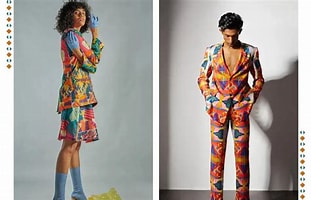
Fashion as a Reflection of Identity
Fashion serves as a mirror reflecting our identity. The clothes we wear can convey messages about our personality, social status, and even political beliefs. For instance, someone wearing a tailored suit may be perceived as professional and authoritative, while another person in casual streetwear might come across as laid-back and approachable.
Historical Context: Fashion Through the Ages
Fashion in the 20th Century
The 20th century was marked by significant changes in fashion that mirrored societal shifts. From the flapper dresses of the 1920s to the punk rock styles of the 1970s, each decade brought new trends that reflected the cultural climate of the time.
The Influence of Social Movements
Social movements have played a crucial role in shaping fashion trends. The feminist movement of the 1960s and 70s encouraged women to adopt more practical clothing styles as they entered the workforce. Similarly, the LGBTQ+ rights movement has influenced fashion by challenging traditional gender norms and promoting self-expression through clothing.
The Role of Clothing in Identity Formation
Gender Identity and Expression
Clothing has historically been used to signify gender identity. Traditional gender roles often dictate what is considered appropriate attire for men and women. However, contemporary fashion is increasingly challenging these norms.
Breaking Gender Norms
Today, many individuals choose clothing that reflects their gender identity rather than conforming to societal expectations. For example, non-binary individuals may opt for styles that blend masculine and feminine elements, allowing them to express their identity authentically.
Cultural Identity Through Fashion
Cultural background significantly influences clothing choices. Traditional garments often carry deep cultural significance and can serve as a means of connecting with one’s heritage.
Celebrating Diversity
Fashion allows individuals to celebrate their cultural identity through clothing. For instance, wearing a sari or kimono can express pride in one’s heritage while educating others about different cultures.
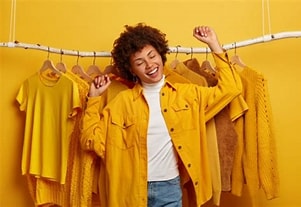
The Impact of Social Media on Fashion Identity
The Rise of Influencer Culture
Social media has transformed how we consume fashion. Influencers on platforms like Instagram showcase their personal styles to millions, shaping trends and encouraging followers to adopt similar looks.
Instantaneous Trends
With social media’s rapid pace, trends can emerge overnight. What was fashionable yesterday might be outdated today. This fast fashion cycle influences how individuals perceive their own identities through clothing.
Online Communities and Self-Expression
Social media also fosters online communities where individuals can express themselves freely through fashion. These platforms provide safe spaces for people to share their unique styles without fear of judgment.
The Psychology Behind Clothing Choices
Clothing as a Confidence Booster
What you wear can significantly impact how you feel about yourself. Many people experience an increase in confidence when dressed well or wearing their favorite outfits.
The Power of Colors
Colors evoke emotions; for instance, wearing red can make you feel bold and powerful, while soft pastels may evoke calmness. Understanding color psychology can help individuals choose outfits that align with their desired emotional state.
Clothing as Armor
For some individuals, clothing serves as armor against societal pressures or insecurities. By choosing specific styles or brands, they can project an image that protects them from judgment or criticism.
Fashion Trends Reflecting Identity Shifts
Body Positivity Movement
The body positivity movement has significantly influenced fashion over the past decade. It promotes acceptance of all body types and challenges traditional beauty standards.
Size Inclusivity in Fashion
Many brands now offer extended size ranges to cater to diverse body types. This shift allows individuals to express their identities without feeling constrained by societal expectations regarding body image.
Sustainable Fashion Choices
As awareness around environmental issues grows, many consumers are making conscious choices about their clothing purchases. Sustainable fashion reflects values related to environmental stewardship and ethical consumption.
Eco-Friendly Brands
Brands that prioritize sustainability often attract consumers who wish to align their purchasing habits with their values. Wearing eco-friendly clothing becomes an extension of one’s identity as a responsible consumer.
The Future of Fashion and Identity
Technology’s Role in Shaping Identity
Advancements in technology are set to revolutionize how we approach fashion and identity. Virtual reality (VR) and augmented reality (AR) allow consumers to try on clothes digitally before purchasing them.
Customization Options
With technology enabling customization options like personalized designs or tailored fits based on individual measurements, consumers can create pieces that truly reflect their unique identities.
Embracing Individuality
As society continues to evolve toward inclusivity and acceptance of diverse identities, fashion will likely become an even more significant medium for self-expression. Embracing individuality will take center stage as people seek ways to showcase their authentic selves through clothing choices.
Read This: The Evolution of Fashion Trends: A Look Back at the Last Decade
Conclusion: Your Style is Your Story
Fashion is an ever-evolving narrative that reflects who we are at any given moment—our experiences, beliefs, cultures, and aspirations shape this narrative daily. As you navigate your personal style journey, remember that your clothing choices are more than fabric; they’re an extension of your identity!
So whether you’re rocking vintage finds or embracing sustainable brands—wear what makes you feel good! After all, your style tells your story—make it one worth sharing!
FAQs
1. How does fashion influence personal identity?
Fashion influences personal identity by allowing individuals to express their values, beliefs, cultural backgrounds, and personal styles through clothing choices.
2. Can clothing choices impact self-esteem?
Yes! Wearing outfits that make you feel confident can boost self-esteem while helping you project your desired image to others.
3. What role does social media play in shaping fashion trends?
Social media allows influencers to showcase their styles widely; this rapid dissemination creates instantaneous trends while fostering online communities for self-expression.
4. How has the body positivity movement affected fashion?
The body positivity movement has led brands to offer size inclusivity while challenging traditional beauty standards—allowing individuals of all shapes and sizes to express themselves confidently through clothing.
5. What is sustainable fashion?
Sustainable fashion prioritizes environmentally friendly practices by using eco-conscious materials; it reflects consumers’ values related to ethical consumption while promoting responsible production methods in the industry.
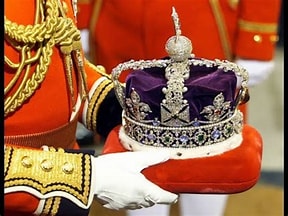
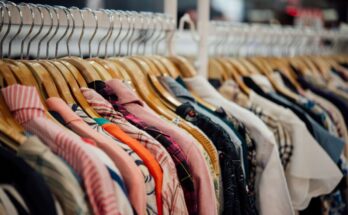
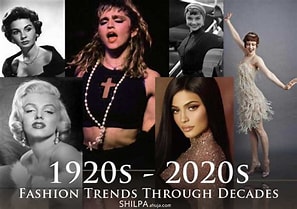
wow 😳😲 awesome I love the style
Thank you
Let me Hear More from you